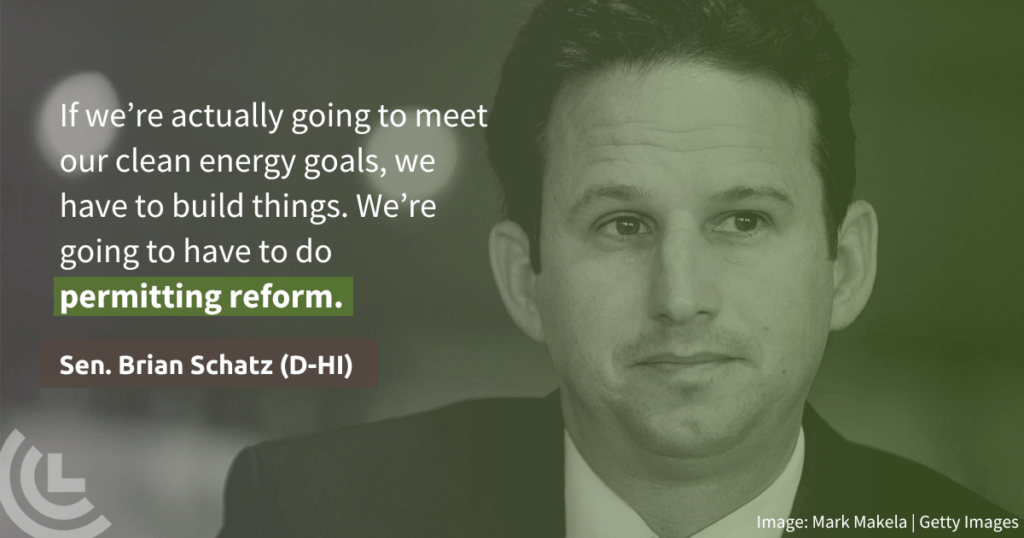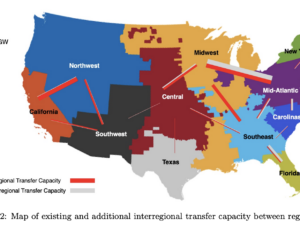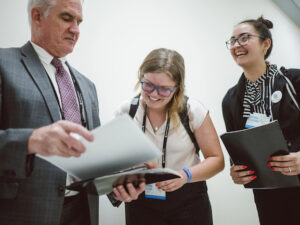Some permitting reforms have passed. What’s next?
On June 3, the debt ceiling deal (a.k.a. the Fiscal Responsibility Act), which included some permitting reform provisions, was signed into law. But Congress still has much more to do in this policy area.
That’s why, 10 days later, 895 CCLers descended on Capitol Hill and held 436 constituent lobby meetings largely focused on clean energy permitting reform. Supporters around the country amplified the message by generating 9,132 messages to Congress urging them to keep going.
So, what exactly is left for Congress to do? We recently held a Citizens’ Climate University training to answer that question. CCL Research Coordinator Dana Nuccitelli looked at what was included in the debt ceiling bill, what more we need in a comprehensive package, and the prospects that Congress will pass a bipartisan clean energy permitting reform deal this year. Watch the full training here or read on for a recap:
The debt ceiling streamlined the NEPA permitting process
Aside from the approval of the Mountain Valley Pipeline, all of the permitting measures in the debt ceiling deal were aimed at streamlining the National Environmental Policy Act, or NEPA, which is the key environmental law governing the permitting process on federal lands. NEPA has remained essentially unchanged over the past 40 years, and so many clean energy permitting reform proponents argue that it is overdue for a modernization makeover.
The provisions passed in the permitting reform bill are aimed at helping federal regulatory agencies work on environmental evaluations more efficiently. For example, when multiple agencies are involved in the permitting of a project, the bill directs them to designate a lead agency to make the final decisions, and for all agencies to work together on a single environmental document to avoid duplicating efforts. It also allows project applicants or their contractors to write their own environmental documents, but requires regulatory agencies to review those documents and take responsibility for their accuracy.
In order to expedite the permitting process, the debt ceiling package also set timelines and page limits for those environmental documents. Environmental assessments for energy projects that could have some significant environmental impacts must be completed within one year and be no more than 75 pages in length. Environmental impact statements for the biggest and most environmentally impactful projects must be completed within two years and 150 to 300 pages. But in order to avoid the publication of rushed and flawed documents that would be vulnerable to lengthy lawsuits, the timelines could potentially be extended in cases where federal agencies need more time to complete them.
CCL’s permitting reform principles
Those NEPA reforms should have a modest incremental effect in speeding up clean energy permitting project timelines, but there’s still a lot more left for Congress to do in this area. As Dana outlined, the debt ceiling bill didn’t do anything to tackle two of CCL’s key permitting reform goals: adding to America’s capacity to transmit clean electricity, and improving communities’ ability to make their voices heard on the environmental and other impacts of proposed energy projects.
Electrical transmission lines are a key bottleneck holding back the deployment of clean and cheap solar and wind farms, and several permitting reform bills include provisions that would help tackle this problem. And measures to help improve early community involvement in the permitting process are important not only to ensure that peoples’ input is heard on the projects that could directly affect them, but also to avoid lengthy lawsuits brought by parties whose voices were excluded.
Let’s make a deal
One challenge in negotiating a second and more comprehensive clean energy permitting reform deal is that the NEPA reforms that passed in the debt ceiling were among Republicans’ highest priorities, and they’re now off the negotiating table. Speeding up electrical transmission lines and improving early community involvement are priorities for Democrats, but to develop a package that can get sufficient bipartisan support, negotiators will have to include some other items of interest to Republicans.
A few such Republican priorities remain unpassed. For example, the statute of limitations on NEPA project lawsuits is currently six years — a lengthy amount of time that creates uncertainty for project developers. Shortening this timeline is a high priority for many Republicans, and there have been proposals from across the political spectrum to reduce it to anywhere from two months to three years.
Another key concession would involve limiting the reach of Section 401 of the Clean Water Act. This section of the law allows states to certify whether federal projects meet local water quality rules. Some states like New York and Washington have used it to reject permits for fossil fuel projects like gas pipelines and coal terminals, sometimes invoking air quality and climate protections. Republicans would like to see the scope of this section limited to direct water quality impacts, given that it’s part of the Clean Water Act. A recent Supreme Court decision called Sackett v. EPA that limited the bodies of water protected by the Clean Water Act (including Section 401) may make this concession more palatable to Democrats.
As Dana discussed, there also remain some smaller clean energy permitting reform provisions that Democrats and Republicans would like to see included in a comprehensive package. Negotiations are ongoing in Congress, and CCL remains cautiously optimistic that a deal could emerge sometime later this year.
Want to help? Make sure your members of Congress have heard from you on this issue. Send them a message with this easy, online action tool that identifies your representative and senators for you and makes it simple to contact them about the need for more clean energy permitting reform. Let’s make it happen!
Learn more about clean energy permitting reform






